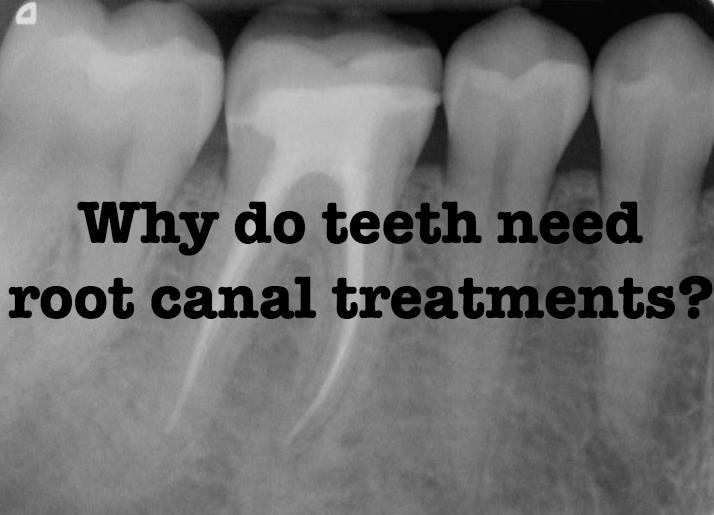When most patients think of endodontics (root canal procedures), they usually assume it is being provided to treat an infection. While the most common reason for a tooth to need a root canal is infection, there are a whole host of procedures and conditions that benefit from endodontic therapy. Take a look at this list of typical reasons that teeth need root canals!
Infection- Indeed, the most common reason most patients need root canals is from bacteria growing around the roots of the teeth. In the classic model of tooth infection, tooth decay spreads to the dental pulp, causing the tissue to become necrotic. This dying tissue becomes a food source for the bacteria, allowing them to flourish. A root canal treats these infections by removing the remaining tooth pulp, sterilizing the interior of the tooth and cutting off the bacterial food supply.
Fractured Teeth- Fractured teeth are often impossible to see and difficult to diagnose. Many times it takes the imaging technology found at an endodontist's office to reveal the location and extent of the crack. Most fractured teeth are impossible to restore and require extraction. However, some smaller cracks can be rectified through a combination of a root canal and crown.
Post Placement- If the top of a tooth is broken off at or near the gum line, placing a crown on the remaining structure is impossible. In certain occasions, a root canal procedure can be performed along with a post placement to save the tooth. A dental post is a metal or composite rod that extends from the root of the tooth to above the gum line, creating a new substructure for a crown to be fashioned.
Trauma- Many times, dental trauma will cause the internal tooth pulp to recede or become necrotic. A clear sign of this is a tooth becoming darker or red-toned following injury. In order to preserve the tooth and minimize risk of infection, a root canal is often performed. After the root canal is finished, internal bleaching can be used to lighten the tooth back to a natural tone.
We hope you found this article helpful! If you have any more questions about root canals, dental trauma or dental crowns, please give our office a call!





